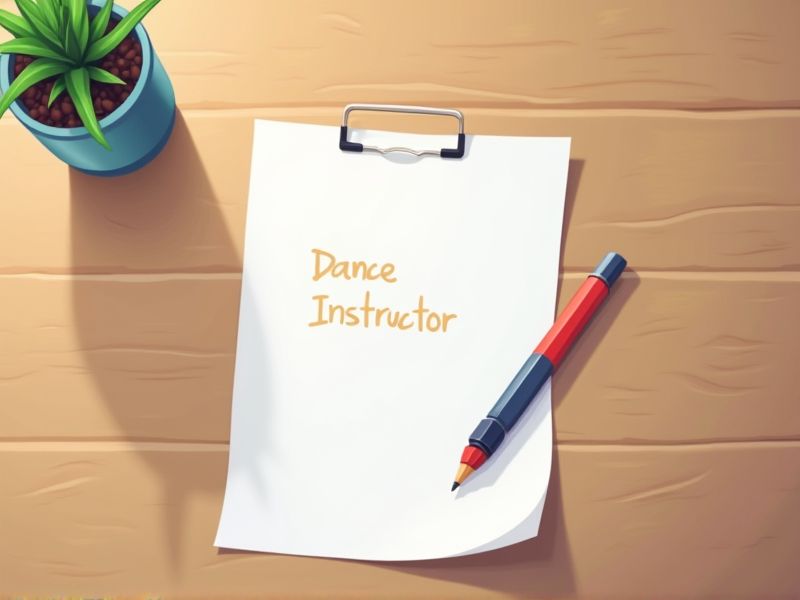
Dance instructors require specific certifications to ensure they possess the technical skills and teaching methods necessary for effective training. These certifications help in building credibility and trust with students and parents, enhancing the instructor's reputation. Proficiency in safety standards, anatomy, and injury prevention is vital to dance instruction, making certification a crucial element. Here are some important certifications you may need to become a certified dance instructor.
Certified Dance Instructor (CDI) Certification
Obtaining a Certified Dance Instructor (CDI) Certification often leads to improved credibility and trust among students and peers, as it formally recognizes an instructor's skills and knowledge. The certification process equips instructors with standardized teaching methodologies, enhancing the quality of dance education provided. Many dance institutions and studios prioritize hiring certified instructors, resulting in more job opportunities and career advancement for certified individuals. Consistent professional development through certification ensures instructors remain updated with current trends and techniques in the dance industry.
National Dance Education Organization (NDEO) Certification
National Dance Education Organization (NDEO) Certification ensures that dance instructors have a standardized level of knowledge and skills, enhancing their credibility in the field. By obtaining certification, instructors are equipped with contemporary techniques and pedagogical strategies, leading to improved student outcomes. Schools and institutions often require certified professionals to ensure a high-quality education, driving the demand for certified instructors. As the industry grows, certification also assists in professional development, keeping instructors updated with industry trends and advancements.
Certified Dance Educator (CDE) Certification
Possessing a Certified Dance Educator (CDE) Certification equips dance instructors with standardized pedagogical skills, which ensures consistent teaching quality across institutions. The certification validates an instructor's comprehensive understanding of dance techniques and methodologies, thereby enhancing their credibility in the industry. Holding a CDE Certification can lead to increased job opportunities and career advancement, as many schools and studios prefer or require certified instructors. Additionally, it helps instructors stay current with industry trends and safety practices, reducing the risk of injury for students.
Ballet Teaching Certification
A ballet teaching certification ensures that instructors possess a comprehensive understanding of ballet techniques and pedagogy, promoting consistent and informed instruction. Certification demonstrates a commitment to professional standards, enhancing the credibility and reputation of the instructor within the dance community. The structured training involved in obtaining certification hones pedagogical skills, allowing instructors to effectively communicate and adapt lessons to various student abilities. Certified instructors provide a higher level of safety and injury prevention awareness, as they are educated in proper techniques and anatomical considerations.
Jazz Dance Instructor Certification
Jazz dance instructor certification ensures that instructors possess the necessary skills and knowledge to teach jazz dance techniques safely and effectively. Certification enhances the credibility of instructors, making them more appealing to potential employers and students. Standards and benchmarks established through certification promote consistency in teaching methodologies. The structured training and assessment process also keeps instructors updated on current trends and advancements in jazz dance.
Tap Dance Instructor Certification
Dance instructors seeking certification in tap dance gain validation of their expertise, which can lead to increased credibility with students and employers. Certification often provides instructors with structured methodologies and techniques, enhancing their teaching effectiveness. This formal recognition can also open doors to more opportunities, such as teaching at prestigious institutions or participating in high-profile collaborations. Ensuring standardized teaching practices, certification helps maintain quality across educational programs in the tap dance discipline.
Hip-Hop Dance Instructor Certification
Dance instructors who pursue Hip-Hop Dance Instructor Certification gain recognition for their expertise, enhancing their credibility in the dance industry. Certified instructors often experience increased opportunities for teaching positions and workshops, as studios prioritize professionals with verifiable skills. Certification ensures consistent teaching standards and techniques, improving the overall quality of hip-hop dance education for students. Studios and organizations value certified instructors for their commitment to continued education, which directly benefits their programs and reputation.
Contemporary Dance Instructor Certification
Achieving a Contemporary Dance Instructor Certification ensures that instructors possess a standardized understanding of modern techniques and theories. This certification enhances the credibility of dance instructors, attracting more students who seek quality education. Encouraging instructors to obtain certification promotes continual professional development and adaptation to evolving dance trends. Certified instructors are better equipped to provide safe, structured, and effective lessons, reducing the risk of injury among students.
CPR and First Aid Certification
Dance instructors work closely with students who may suffer physical injuries; CPR and First Aid certification equips them to respond effectively to emergencies. In dance classes, physical exertion can occasionally lead to situations like sprains, falls, or even more critical events like sudden cardiac arrest. Being certified ensures instructors are prepared to stabilize these situations until professional medical help arrives. This preparedness not only enhances the safety of students but also builds trust among parents and institutions that prioritize student well-being.
Dance Safety and Injury Prevention Certification
Dance instructors are tasked with physically guiding students, and a certification ensures they understand how to prevent injuries. Knowledge of dance safety allows instructors to create a secure environment conducive to learning, reducing the risk of accidents. Injuries can lead to downtime and impact both dancers' and instructors' livelihoods, making prevention cost-effective. Certification in safety practices enhances a dance instructor's credibility and trustworthiness in the eyes of students and parents.
Summary
You can expect a Dance Instructor with certifications to enhance their credibility and appeal to students and studios. Certifications often lead to improved teaching techniques as they typically encompass advanced training and educational methodologies. Students may gain increased trust and confidence in the instructor's abilities, encouraging more enrollment. You might notice the instructor's network expanding, opening up further opportunities for collaborations and workshops.
